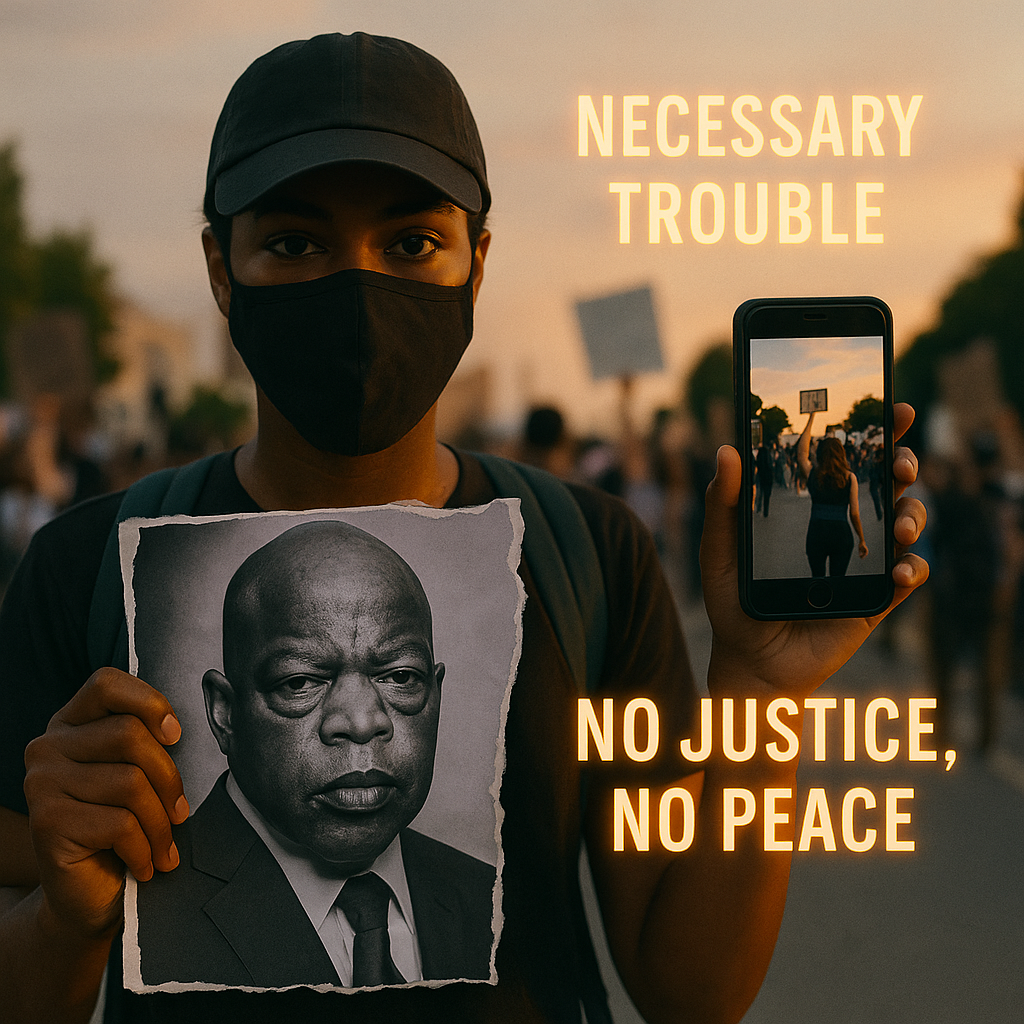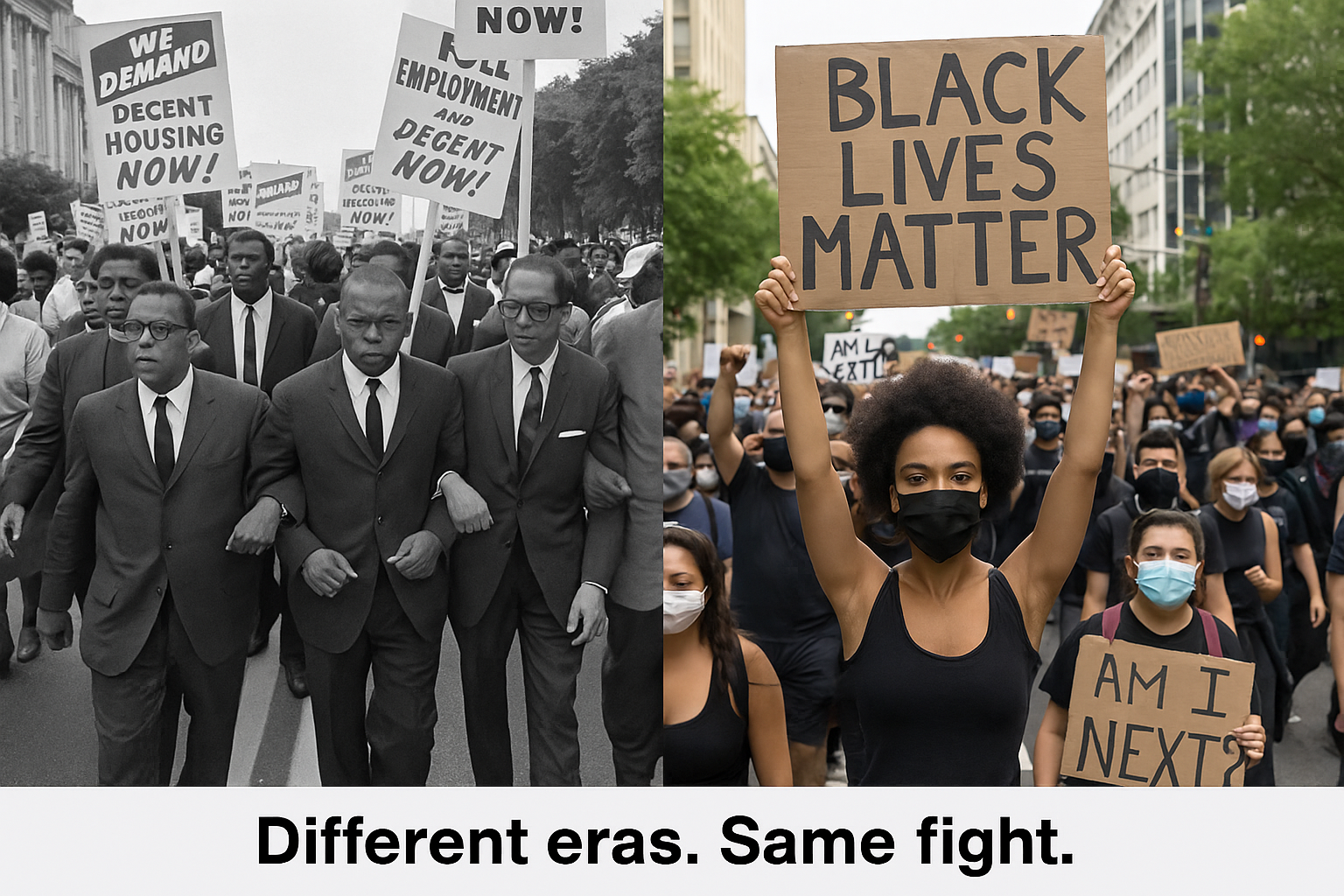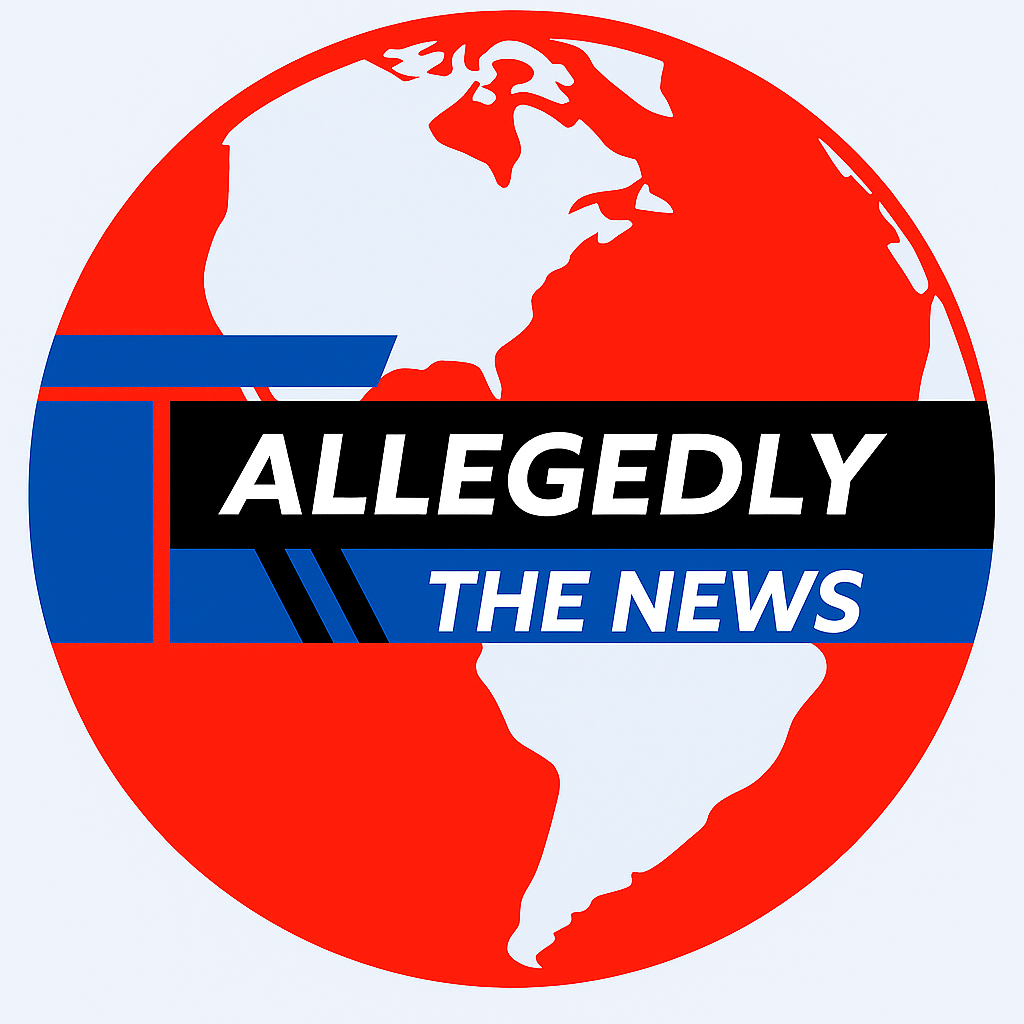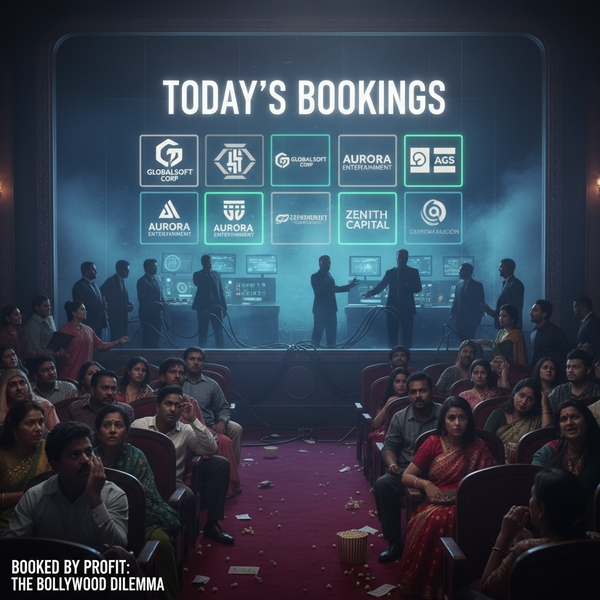Is This Protest the New Civil Rights Movement? Dissecting ‘Good Trouble Lives On’
From civil rights to digital resistance, today’s protests are louder, broader, and deeply intersectional. “Good Trouble” lives on fueled by rage, repression, and radical hope for systemic transformation.

Written by Saransh kamboj – Intern, Allegedly The News
Introduction: The Echo of a Movement
In the shadow of rising authoritarianism, racial inequality, immigration crackdowns, and widening wealth gaps, a bold chant has returned to American streets: “Good trouble, necessary trouble.” Once the battle cry of the late Congressman John Lewis, that phrase now resurfaces, sewn into protest banners, woven into chants, and tattooed across the digital timelines of a generation on fire. But is this just another wave of unrest? Or are we witnessing the resurgence of a modern Civil Rights Movement a new insurgency demanding justice not just for Black lives, but for marginalized voices across race, class, gender, and borders?
Let’s take a scalpel to the anatomy of this moment and ask: Is “Good Trouble” living on or evolving into something deeper?
1. A Nation in Crisis: The Landscape of Modern Protest
America is convulsing. Not just from inflation or war fatigue, but from a soul-deep discontent that stretches from the Rio Grande to the Supreme Court steps. The catalysts are everywhere:
- Political Suppression: Voter ID laws. Gerrymandering. Book bans. Classroom gag orders. The targeting of trans youth and critical race education.
- Immigration Rage: Title 42. Family separations. “Invaders” rhetoric from the highest offices. ICE raids like midnight terror drills in America’s sanctuary cities.
- Police Violence & Systemic Racism: From George Floyd to Tyre Nichols, the Black body remains a battleground.
- Economic Warfare: Staggering inequality. Student debt bondage. Gig economy exploitation. Union busting.
This is not sporadic discontent. This is a tectonic political anger and like the 1960s, it is organizing, converging, and becoming a movement of movements.
2. The Myth of “Post-Racial America” Has Collapsed
Obama’s presidency gave rise to the comfortable fiction of a post-racial America. That myth was shattered by Trayvon Martin’s hoodie, Ferguson’s tear gas, and Donald Trump’s wall.
The “Good Trouble Lives On” protests, unlike the Civil Rights era, are not only focused on legal desegregation or voting rights but on systemic dismantling: abolition of police systems, decolonization of public education, indigenous land recognition, trans liberation, and open border ideologies. This is intersectional warfare.
It’s why BLM signs share protest corners with Free Palestine, No ICE, and End the Fed banners. Protest is no longer single-issue. It’s a globalized moral revolt.
3. Protest Then vs. Protest Now: A Tone Shift
Let’s compare eras tone, tactics, and targets:
| Civil Rights Movement (1950s-60s) | Good Trouble Era (2010s–present) | |
|---|---|---|
| Tone | Hopeful, moral, biblical, structured | Angrier, more radical, decentralized |
| Leaders | Clergy, charismatic figureheads (MLK, Lewis) | Activist collectives, digital influencers |
| Tactics | Sit-ins, marches, legal battles | Hashtag mobilizations, direct actions, building occupations |
| Demands | Civil rights protections, voting access | Abolition, reparations, climate justice, queer liberation |
| Symbols | Church hymns, suits & ties, “I Have a Dream” | Gas masks, murals, “Say Their Names,” TikTok megaphones |
This is not to say one movement is “better.” It’s that today’s rebellion reflects a different trauma and urgency. It is less patient. Less trusting. More self-empowered.

4. Political Suppression: Repression Is the Tell-Tale Sign of Power’s Fear
Power does not fear hashtags. It fears movements. And today’s protest wave has provoked backlash on every front:
- Anti-protest laws: 36 states introduced bills criminalizing protests—some allowing motorists to run over demonstrators without liability.
- Surveillance state: Stingrays, drones, social media scans, facial recognition—deployed not in war zones but in American cities.
- Political prisoners: From whistleblowers like Reality Winner to BLM leaders arrested on trumped-up charges, America has begun selective repression of dissent.

This is classic empire behavior: When moral authority fails, the state reaches for force. That’s what happened in Birmingham. And that’s happening again in Kenosha, in Atlanta’s “Cop City,” and in Laredo’s immigrant detention facilities.
The question is: Will the public stay asleep or wake up?
5. Immigration: America’s New Frontline of Civil Rights
Immigration may be the new Selma Bridge a symbolic and literal boundary between democracy and apartheid.
The state-sanctioned brutality seen in family separations, mass deportations, and detention camps is structural ethnic cleansing repackaged as “policy.” And it has ignited a new breed of protest: immigrant-led, bilingual, often intergenerational. Youth-led organizations like United We Dream, RAICES, and Mijente are spearheading resistance with the same defiance SNCC once showed in Mississippi.
Their demands go beyond DACA they want abolition of ICE, sanctuary cities, citizenship for all, and the tearing down of legal apartheid. To them, good trouble means crossing borders, both physically and ideologically.
6. Civil Disobedience 2.0: The Digital Frontlines
Today’s movement doesn’t just march. It streams. Hacks. Codes. Memes.
Memes are modern protest posters. TikToks are digital sermons. Threads on X (Twitter) are ideological manifestos. Cyber-activists dox landlords, expose cops, crash municipal servers.
This is information guerrilla warfare. And it is effective.
The Civil Rights Movement relied on TV news to reach white America’s conscience. Today’s Good Trouble Movement bypasses gatekeepers and beams rage directly into global consciousness.
That power unfiltered, real-time, viral is why states are now censoring TikTok, suppressing hashtags, and funding AI surveillance.

7. Social Unrest Is Not Chaos—It’s the Birth of Order
Mainstream media calls this era “chaotic,” “disorderly,” “fractured.” But history tells a different story.
- In 1967, 159 U.S. cities burned in rebellion. Now, it's Minneapolis, Ferguson, Atlanta, Portland, Oakland.
- In 1970, over 4 million students walked out in protest of Vietnam. In 2020, 26 million marched in defense of Black lives.
These are not breakdowns. These are breakthroughs.
Today’s unrest is not a bug in the system it is the system crashing from the weight of its own lies. And just like the 1960s, those in power are again asking: “Why can’t they protest peacefully?” But peace, as Dr. King taught, is not the absence of tension, it is the presence of justice.
8. The Culture War Within the Movement
Unlike the Civil Rights Movement, the modern protest landscape is plagued by internal fractures:
- Generational divides between boomers and Gen Z.
- Strategic divides between reformists and abolitionists.
- Class divides within activist spaces.
- Performative allyship vs lived struggle.
Call-out culture, cancel waves, and ego battles often sideline the mission. But that, too, is part of movement evolution. Coalition is hard. Democracy is messy. Liberation is not monolithic.
Still, the danger is real: If today’s Good Trouble doesn’t find common language, it may burn itself out as did Occupy and Arab Spring.
9. Why This Matters Now More Than Ever
The 2024 election cycle looms with deep stakes. AI deepfakes threaten truth. Climate collapse haunts the horizon. And authoritarianism no longer whispers it shouts.
Protest isn’t symbolic anymore. It’s survival.
What happens now whether “Good Trouble” becomes legislation or lore will define whether the American experiment collapses into oligarchy or claws its way back to justice.
The stakes are that high. The time is now.
Conclusion: Good Trouble Is Evolving—Will We?
To answer the headline: Yes, this is the new Civil Rights Movement but it is messier, angrier, and more intersectional than anything America has seen. It is not a carbon copy of Selma or Montgomery it is Selma reimagined for the digital age, for climate collapse, for mass incarceration, for migrant children.
And that’s its strength.
Because “Good Trouble” is not nostalgia it is a living idea, growing in detention centers, picket lines, drag shows, reservations, and Gaza solidarity marches.
The baton has not only been passed it’s been hacked, re-coded, and livestreamed.
The question is not whether Good Trouble lives on.
The question is whether you will join it.
Sources:
- CourtListener
- Justia Civil Rights Database
- Archive.org
- Google Trends – Protest Analytics
- Amnesty International Reports on U.S. Police Violence
- Protest Laws Map – ACLU
- Human Rights Watch – U.S. Immigration Policy
- Official Press Releases: BLM, ACLU, RAICES, NAACP
For more legal exposes and truth-behind-glamour stories, subscribe to AllegedlyNewsNetwork.com




